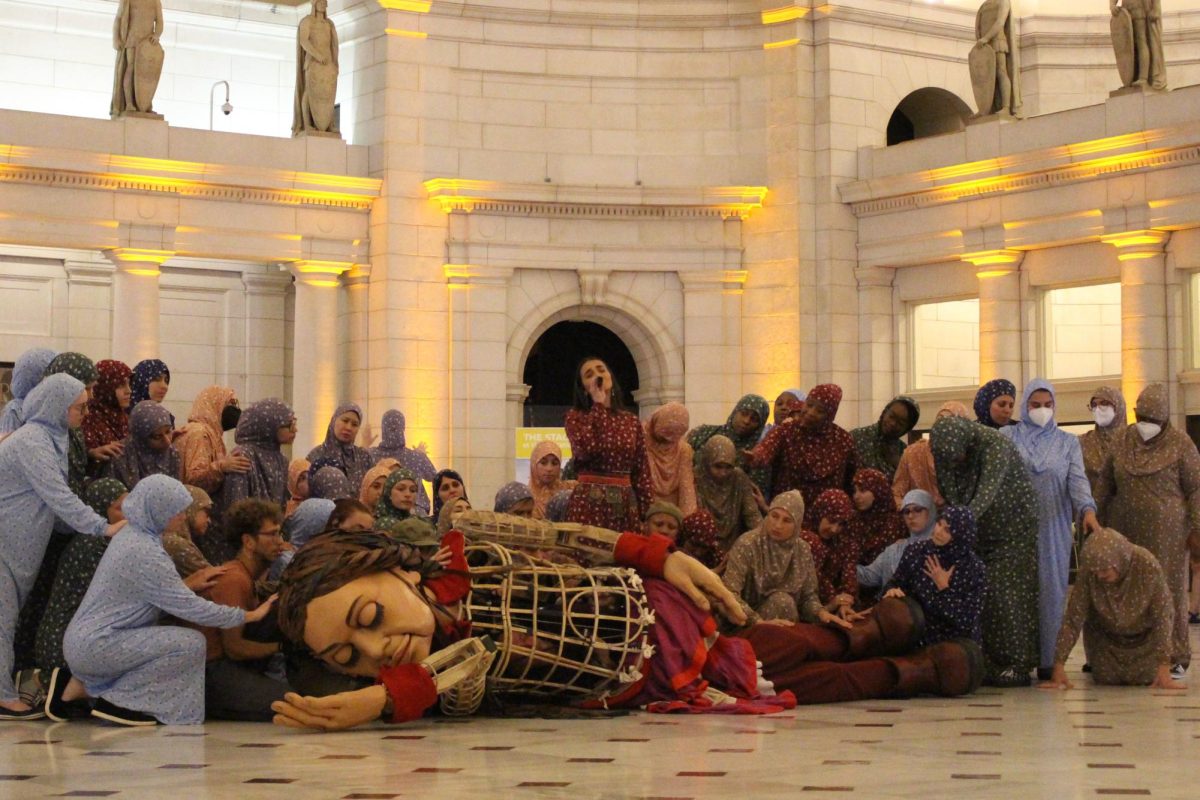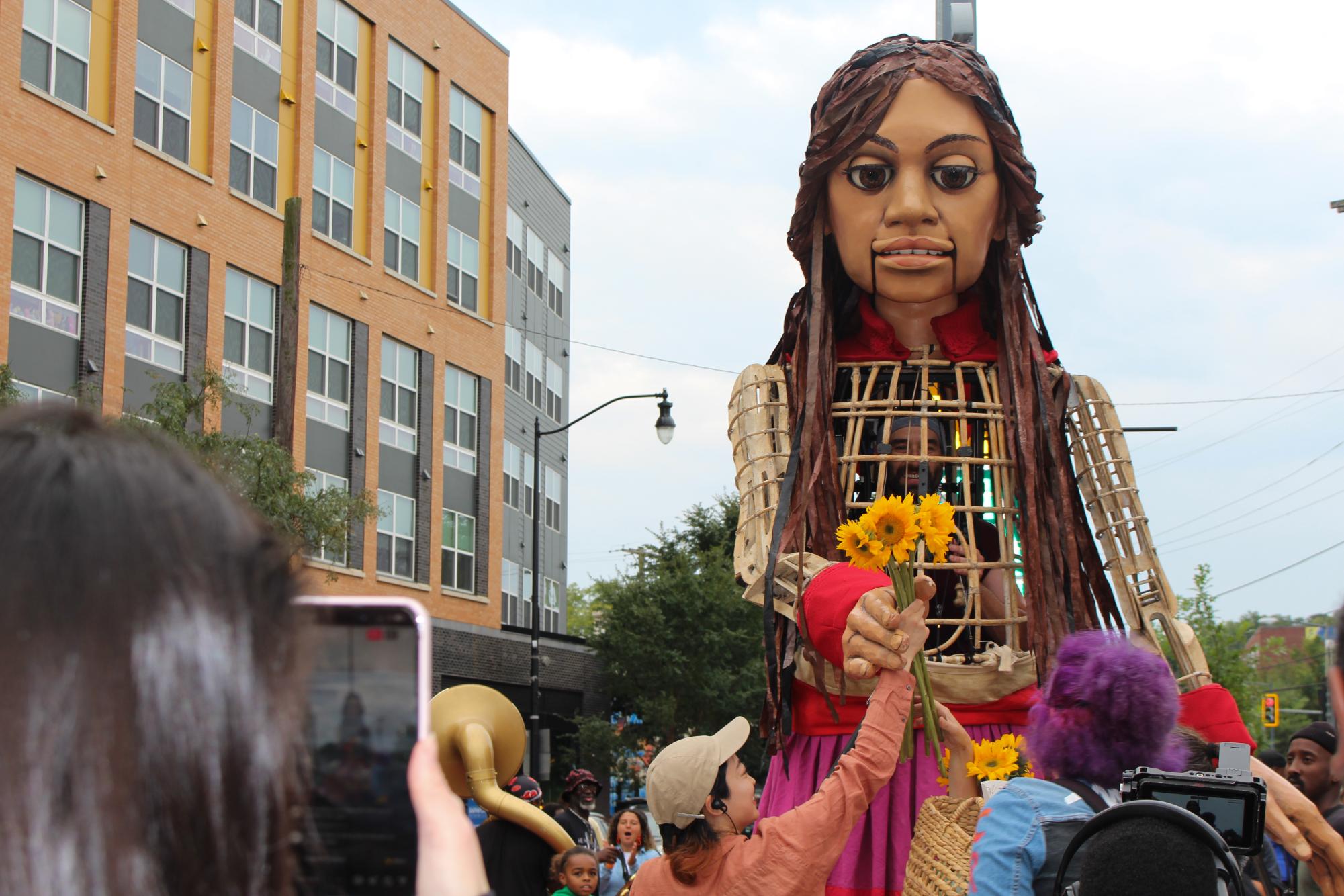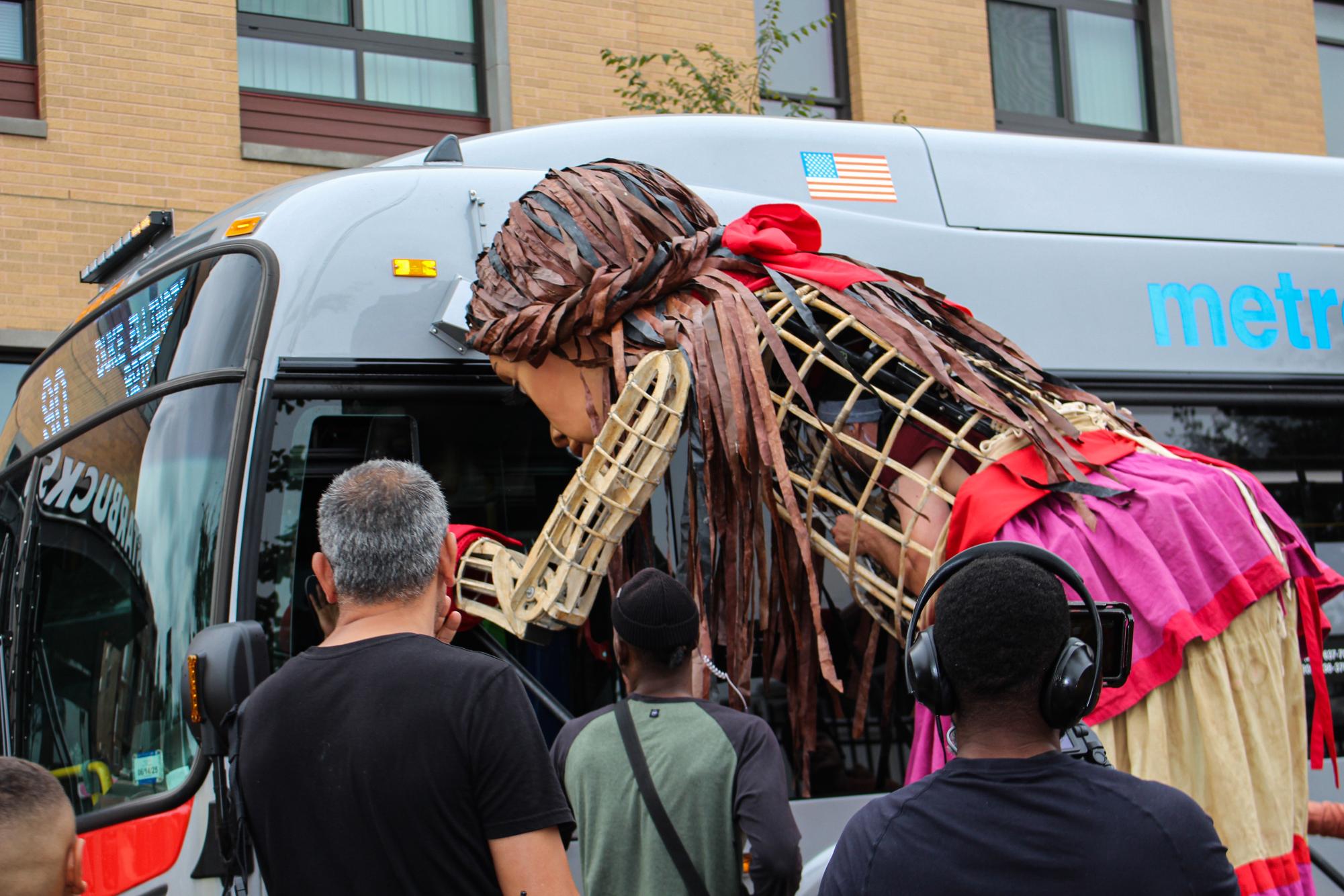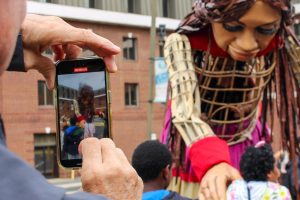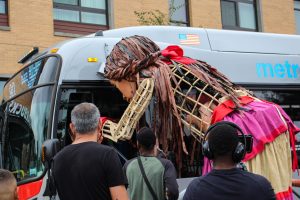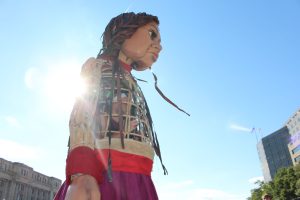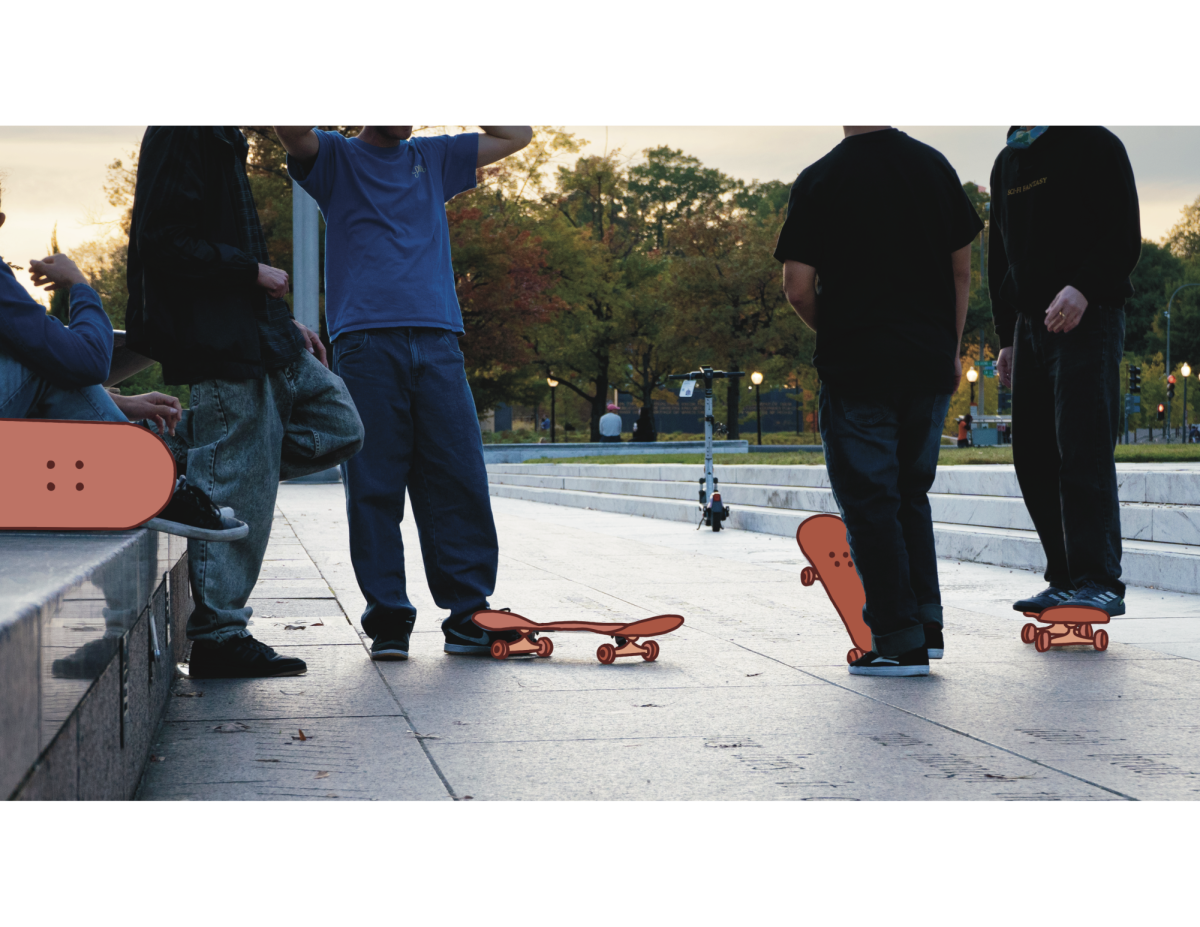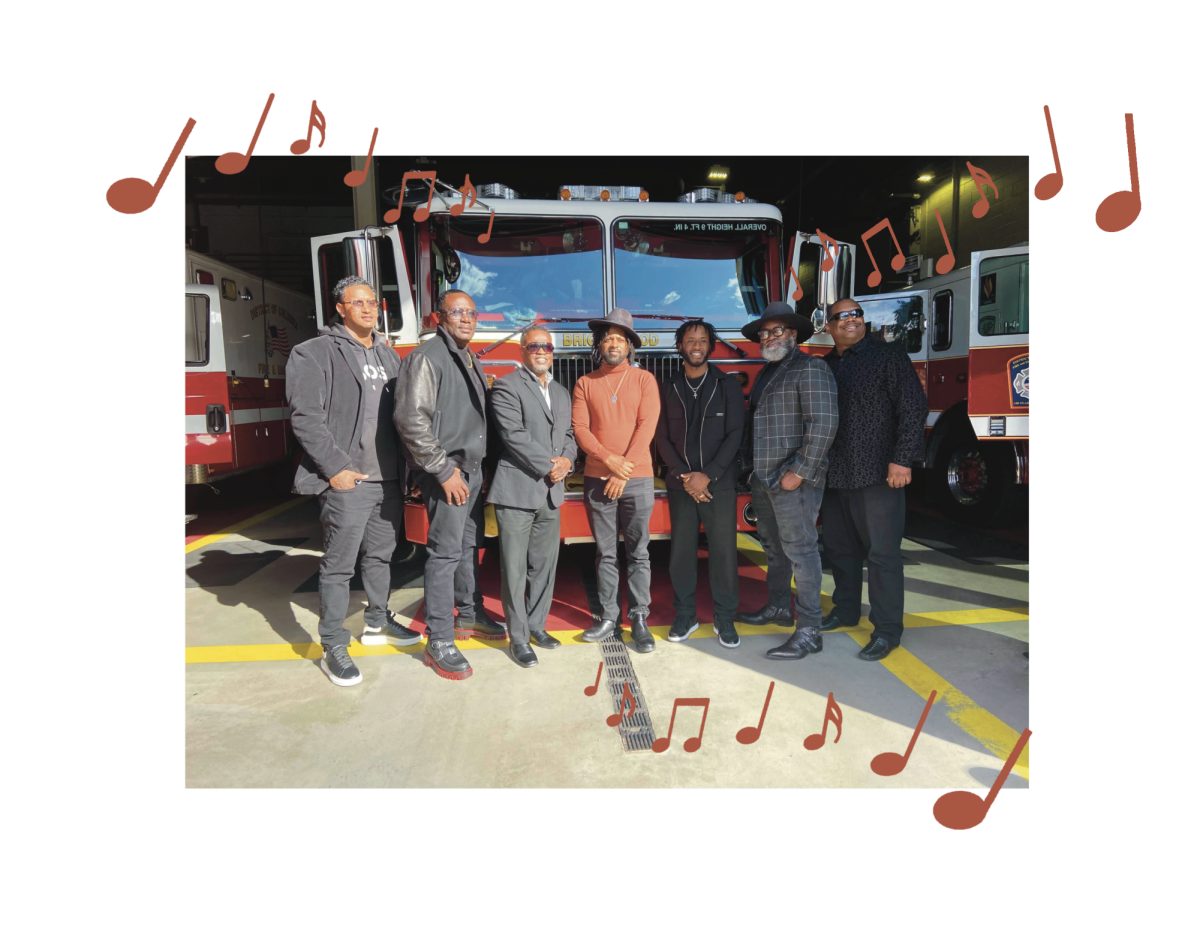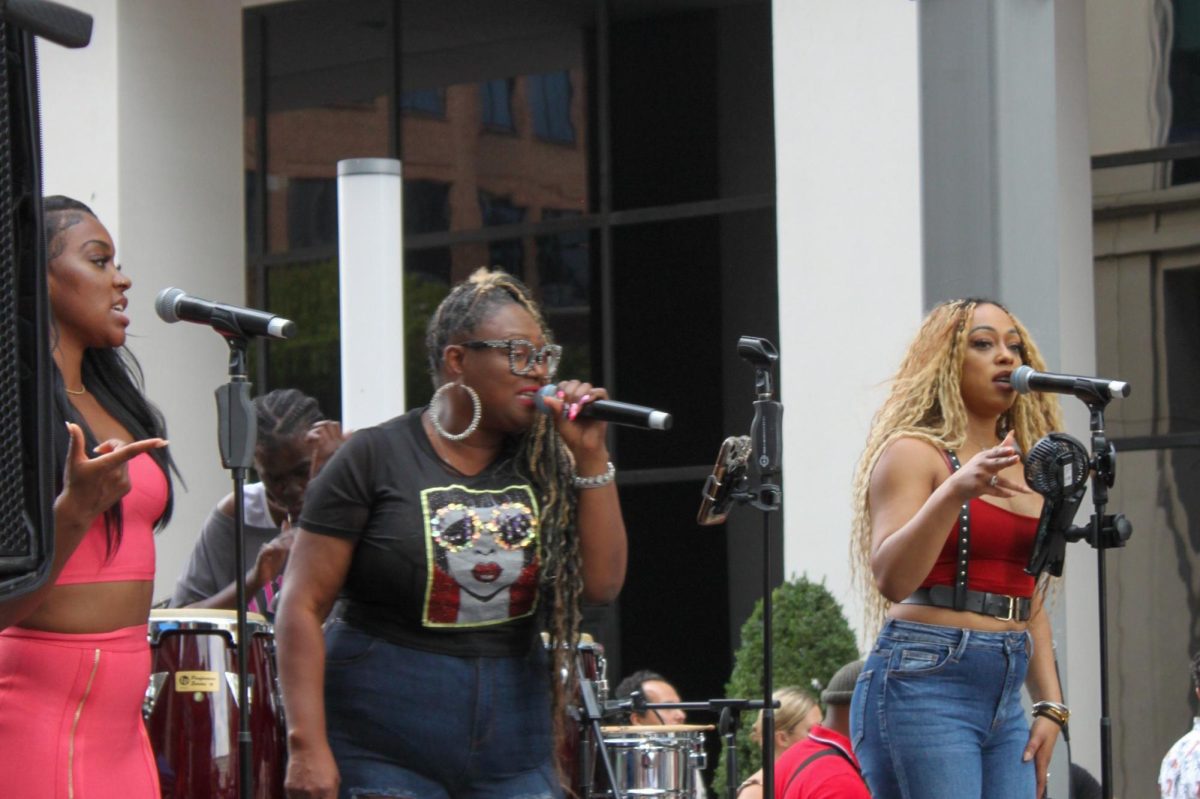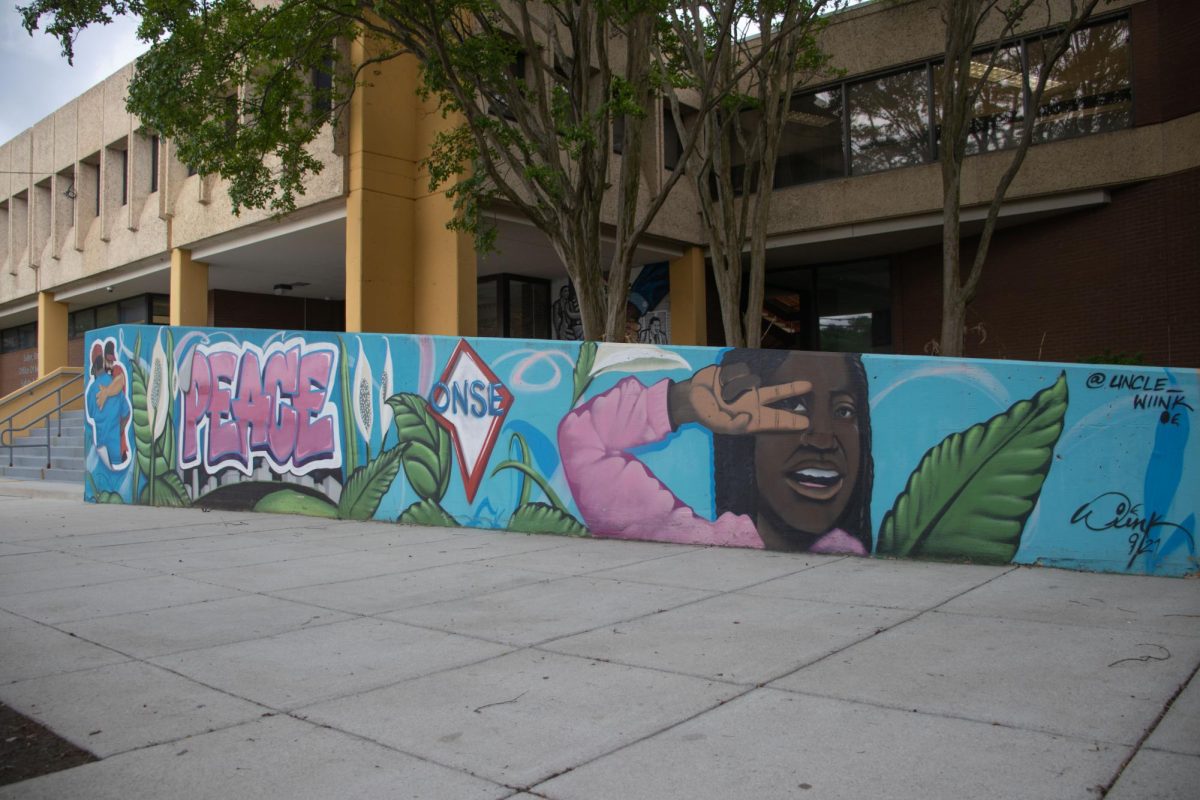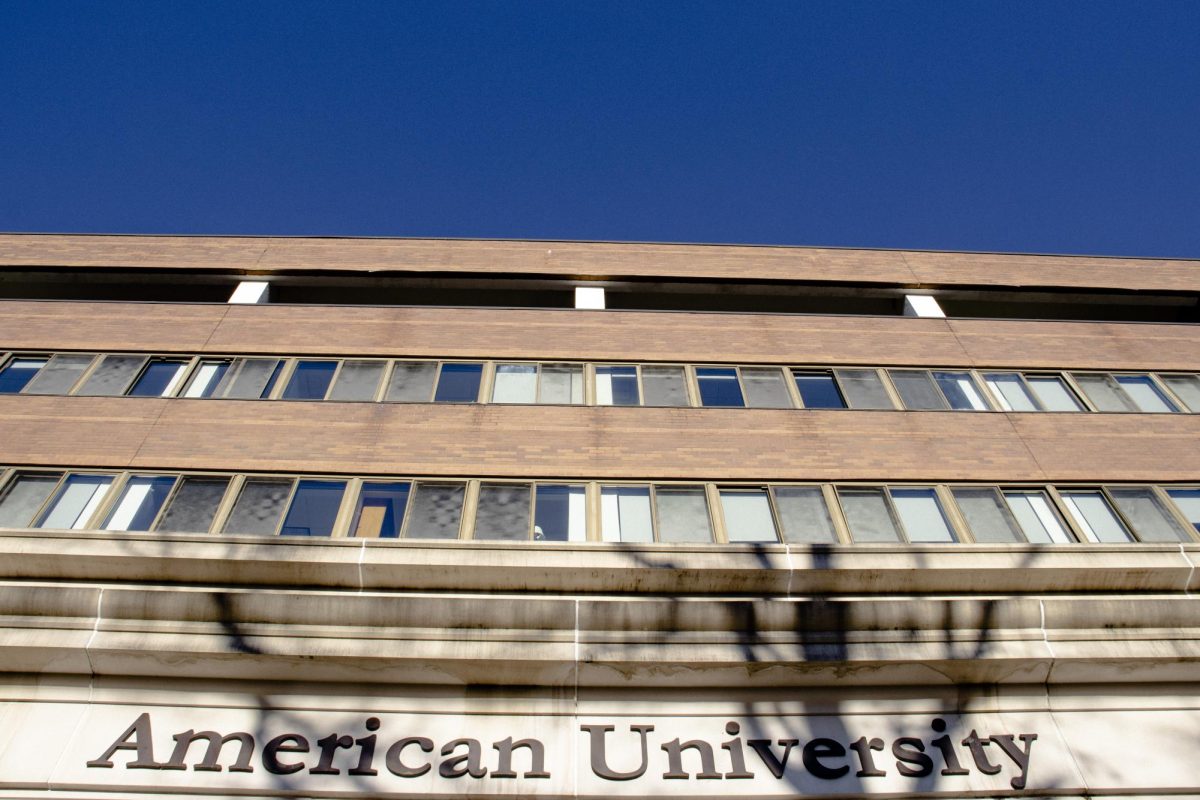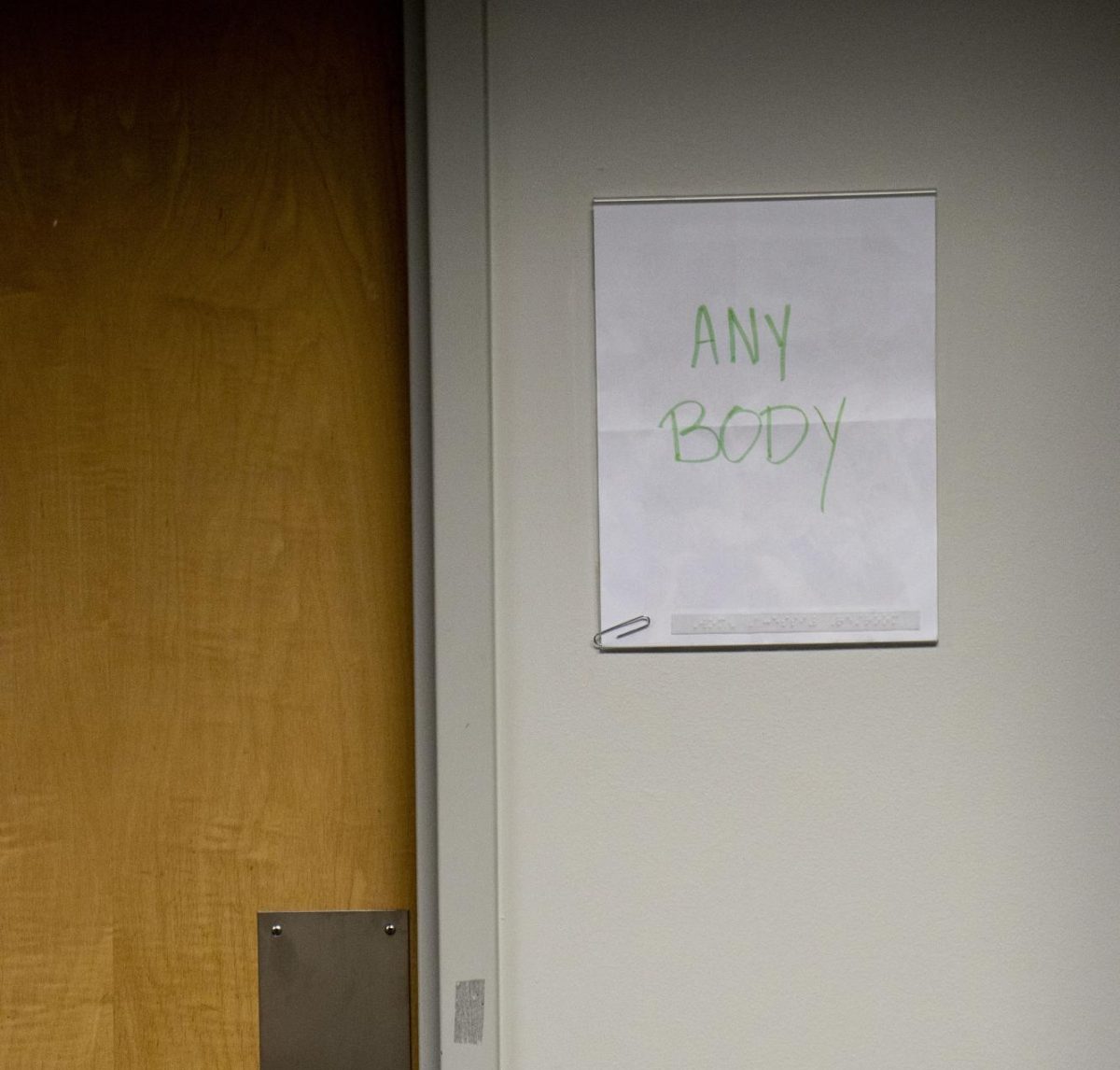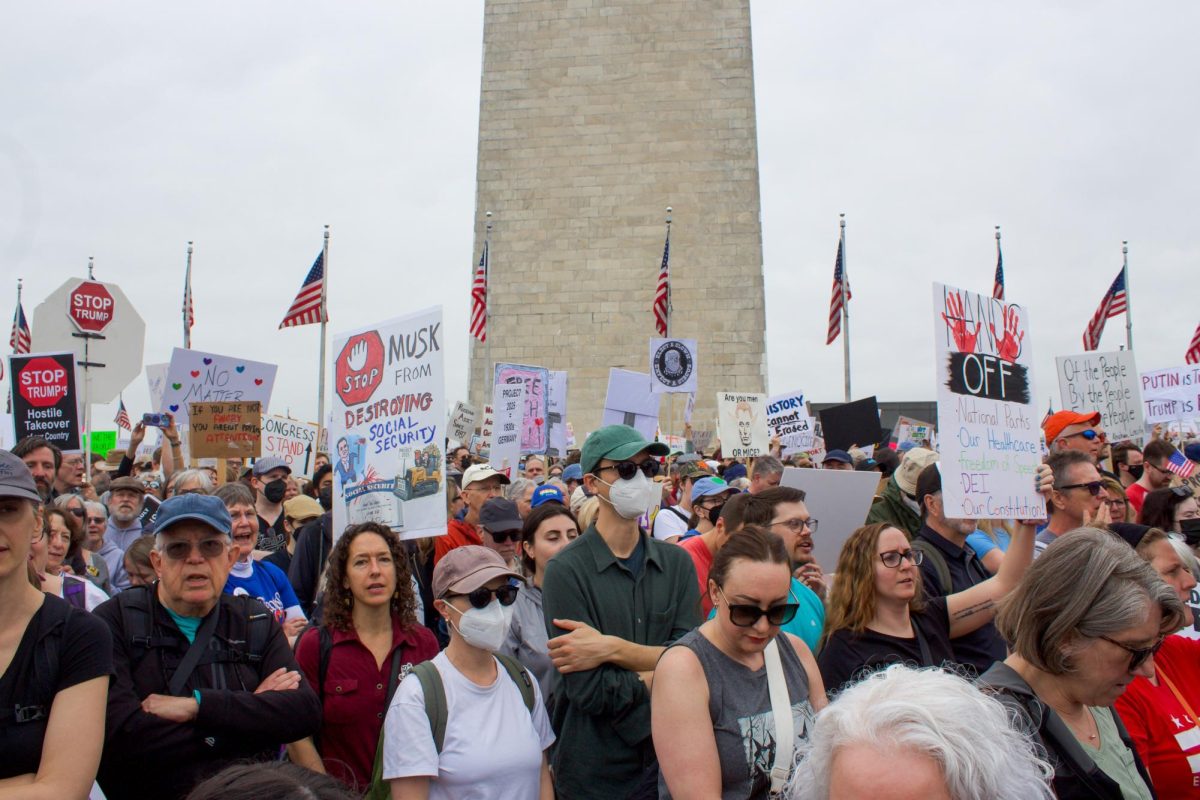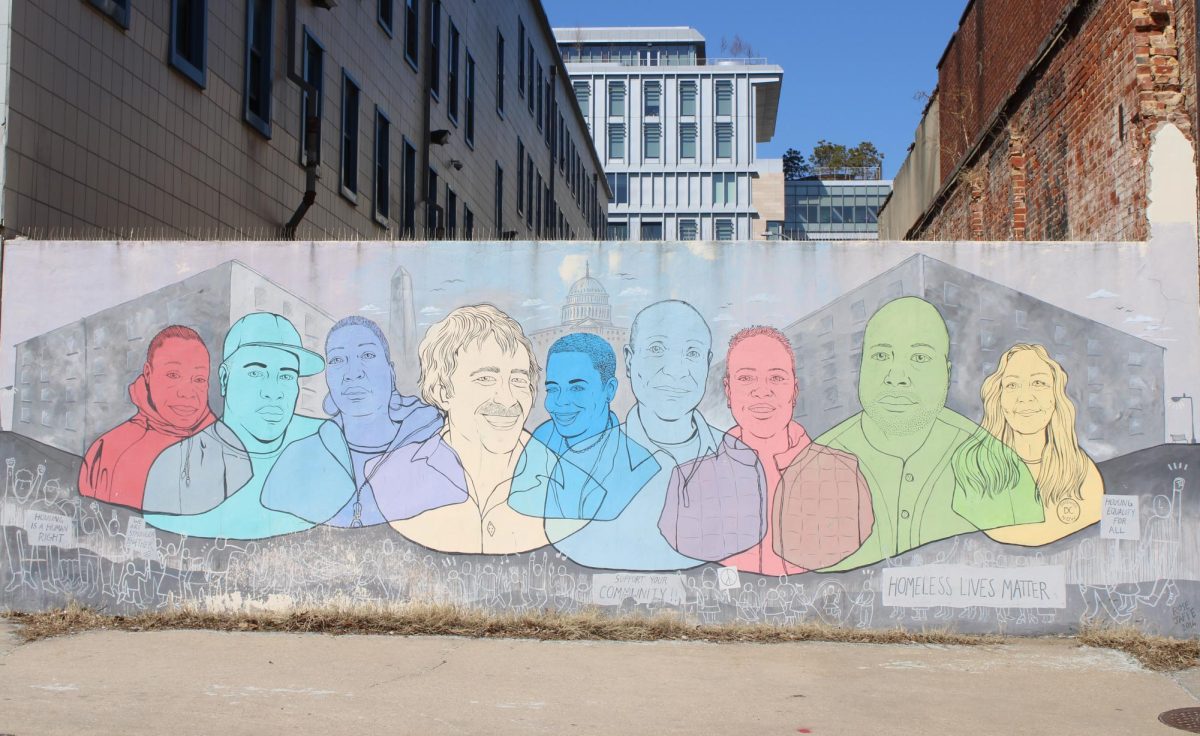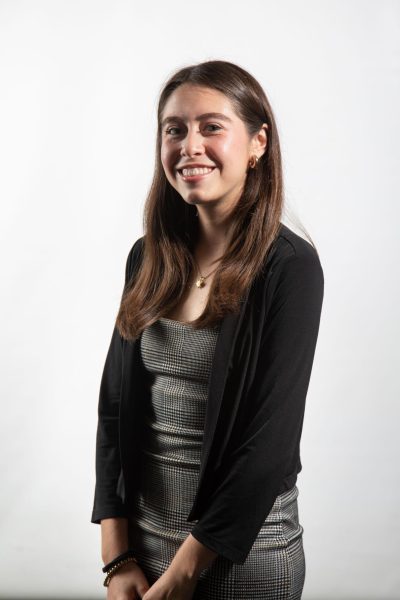Washington, D.C., welcomed Little Amal, a puppet representing a young Syrian refugee, in September.
Little Amal made her way across the National Mall and to the Washington Monument on Sept. 17, where she was greeted by the Welcome.US agency. Welcome.US provides Americans with the resources needed to welcome those seeking refuge and partnered with Little Amal in her walk through the District, according to their website.
Ilah Ash, 11, and Thea Keller, 10—the daughters of the CEO and COO of Welcome.US.—gifted Little Amal a friendship bracelet.
“Everyone calls her Little Amal, but she’s really big,” Keller said.

At 12-feet tall, Little Amal towers over the crowds of people following her as she walks through city after city, with the help of a puppeteer on each arm and one inside of the puppet on stilts, according to David Lan, the co-founder and producer of The Walk Productions, the non-profit company that organized Little Amal’s journey.
These walks first began as a recreation of the journey that a Syrian refugee might make from the border between Turkey and across Manchester in the United Kingdom, Lan said. As one of her two producers, Lan worked with The Walk from its conception and is the only producer with Little Amal as she travels from Boston to San Diego.
“A 10-year-old child refugee is going to turn up in your village or town or city,” Lan said. “She can be really tired and hungry. Very hungry. So how will you welcome her?”

The Walk Productions initiated the project in July 2021 by commissioning the Handspring Puppet Company to create her, according to Lan. For two years, the puppet has represented a child in need of a supportive community as she has traveled through several countries across Europe and the Middle
East before arriving in the U.S. in September of this year. Over a span of two months, Little Amal traveled through 30 U.S. cities and partnered with different artists and organizations along the way, Lan said.
Assistant Secretary of State Julieta Valls Noyes spoke at the Sept. 17 event in front of the Washington Monument. She said that it is important to sponsor refugees and welcome them into our communities.
“Little Amal will be spreading her message of hope and inviting everyone who she meets to become welcomers,” Noyes said, before directing the audience’s attention to Ash and Keller who then gave the puppet the bracelet.
The two girls said they were excited to be involved in the event and that it was significant.
“I got the feeling like it’s gonna be something really big and really heartwarming for a lot of people,” Ash said.
Two days later, on Sept. 19, Little Amal walked from Freedom Plaza to the Capitol surrounded by a sea of silver: large pieces of tinfoil representing safety blankets for the doll that were handed out to the audience to be waved around like an ocean. At the Capitol, Rep. Debbie Dingell and Rep. Jamaal Bowman met Little Amal.
“I’m glad to welcome you here with the Capitol dome behind us,” Dingell said. “Because that dome stands for democracy. It stands for hope. It stands for welcoming you to the United States of America.”
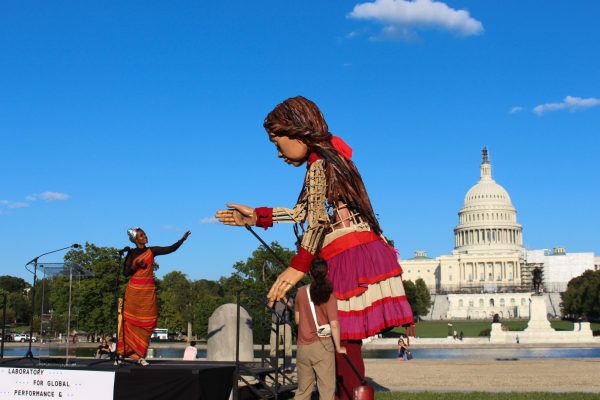
Managing Director at the Soze Agency, which partnered with The Walk Productions for the event, said the grandeur of Washington was fitting for Little Amal’s impact as she was welcomed into the nation’s capital.
“To meet all the families who have come here, as newcomers to this country, greeting her and welcoming her, many of which have traveled the same journey she’s traveled, was beautiful,” Skolnik said.
The Soze Agency, which means “never again” in the South African Bantu language Zulu, is a creative agency that works to create campaigns, projects and impact strategies for their clients, according to their website. Skolnik, one of the six co-founders, said he became involved with The Walk after visiting Little Amal in New York last year.

The Walk’s mission reflected a larger problem in Syria overall, AU History Professor and Mohamed S. Farsi Chair of Islamic Peace at SIS Elizabeth Thompson said. She said Syrian refugees have been through a series of struggles both throughout and after the civil war.
“Leading into the refugee situation, more than half of the population was displaced, because the fighting took place in every single town,” Thompson said. “And, you know, half or more of those who fled their own homes, ended up across the border.”
Thompson said that there might be a second generation of children who do not have a normal life, and Skolnik said he sympathizes with this.
“If children of refugee status need a place to sleep at night, we should find them a place to sleep,” Skolnik said. “I think it shows the best of who we are, and shows the abundance of love and care that we have in this country for others.”


